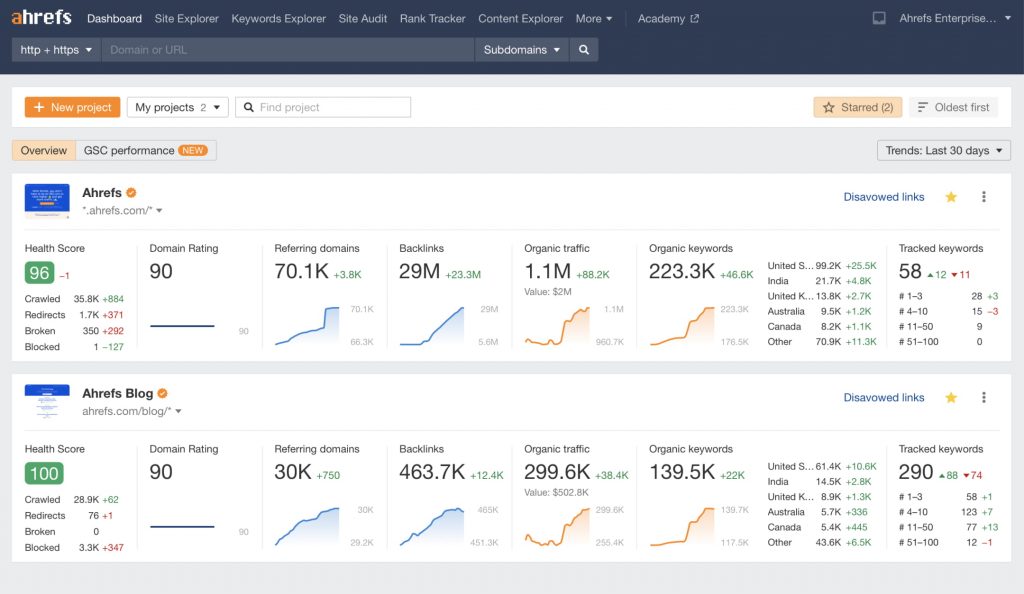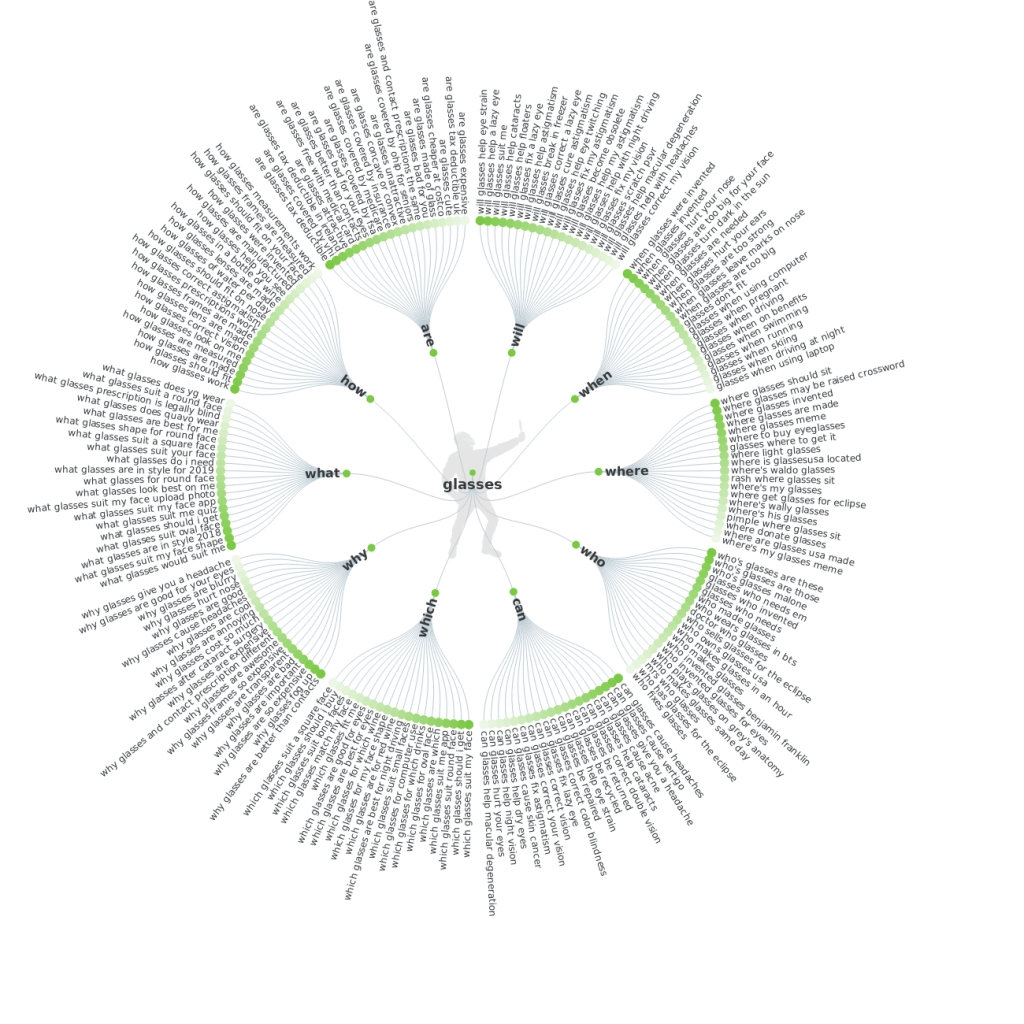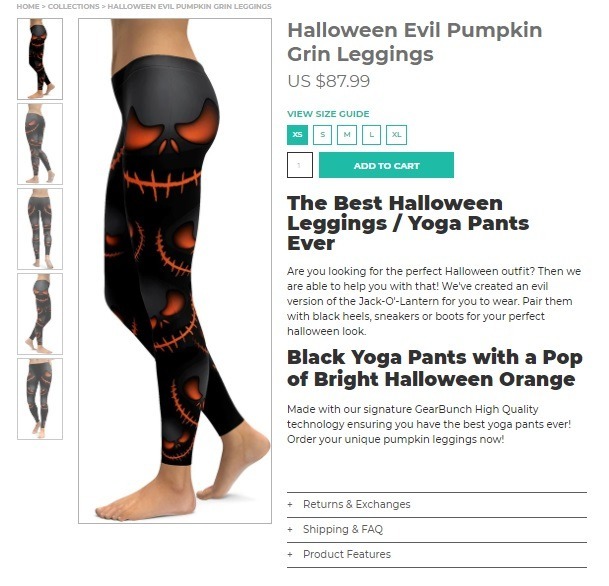We all know that eCommerce SEO is a crucial ingredient in growing your store traffic long term.
Why?
Working together with eCommerce ads and PPC, SEO helps generate a steady flow of organic eCommerce traffic over time, making it crucial to your online business’ survival.
Not getting enough customers to your product pages? Get Google marketing hacks (used by our 20K customers) straight to your inbox for free for one week!
We also know that achieving peak SEO can seem like moving the goal post, but boosting organic traffic doesn’t have to be as complicated as it may appear and can be accomplished with the right eCommerce SEO hacks, services, and tools.
The secret?
Being strategic while consistently creating a great shopping experience.
So how can you master organic eCommerce traffic without the need for expensive agencies? By following these effective 10 eCommerce SEO tips to help you build and maintain your Shopify traffic growth strategy.
How to Boost eCommerce SEO
- Become a Data Wizard
- Study Your Target Shopper
- Stalk Your Competitors
- Become an SEO Keyword Research Pro
- Invest Big in One-Page Optimization for eCommerce
- Do a Technical SEO Audit of Your Site
- Build an SEO-Driving Content Marketing Strategy
- Create a Solid Link Building Strategy
- Kick-Start eCommerce SEO with Optimized Google Ads
- Consider Investing in One of These eCommerce SEO Services and Tools
Step #1: Become a Data Wizard
The first step in upgrading your eCommerce SEO strategy to boost traffic is diving really deep into your data. If you don’t have a good insight into the metrics, you can’t optimize to peak performance.
It shouldn’t surprise you that your online store and search engine analytics are an essential part of your eCommerce SEO strategy. In fact, having a good understanding of how to hack your data beforehand will not only help you set your strategy, but assist you and your marketing team in becoming data experts who can identify areas for improvement and make quick tweaks to boost performance.
To start, you want to make sure you have installed and set up Google Search Console, Bing Webmaster Tools, and Google Analytics tools. After this, you will need to look at all your data before moving forward.
Here are some of the top metrics you’ll want to familiarize yourself with:
Essential eCommerce SEO Metrics
- Overall organic traffic
- Clicks from search engine results
- Organic eCommerce website transactions and revenue
- Bounce rates
- Landing page reports
- Internal site search
- Organic assisted conversions and conversion rates
- Google search ad impressions, impression shares, CPAs, and CTRs
- Account quality score
- Audience insights
- Google Search ad and SEO keyword performance and visibility
It’s not just Google Analytics that gives you valuable data you can study and use.
Tools like Google’s Webmaster Tools and Ahrefs give you highly valuable data. Some additional useful metrics Ahrefs offers include health score, domain rating, and keyword tracking – but more on this tool later.
Step #2: Study Your Target Shopper
Sure, SEO is about optimizing for search engines, but it’s humans doing the searching.
Therefore, to truly master eCommerce SEO, you need to get into the minds of your potential shoppers.
Yes, this means looking at usual demographics such as location and age. However, what’s most important here is having a deep awareness of the needs of your potential shoppers.
This doesn’t imply that marketers should just be focusing solely on SEO keyword research to find out what they are looking for. Instead, you should hang out where they are, such as niche-specific Facebook groups or on Reddit or Quora.
This will help you get:
- A deeper understanding of what kinds of pain points your target audience has
- And a way to answer these with your content, meta description, and product data
In a nutshell, defining your target shopper enables you to plan content strategies that will help SEO: targeting, bringing, and engaging with new potential shoppers, AKA boosting traffic while helping shoppers. To define your target shopper for eCommerce SEO, you will want to:
- Dive into your store analytics to get a deeper understanding of your current shoppers.
- Use forum and keyword research to narrow down your focus – but more on that further down the post.
Step #3: Stalk Your Competitors
Once you have studied the most important metrics and have a good understanding of what your shoppers are looking for, your next step is to study your closest competitors. You will want to:
- Review how your competitors are doing within SERP pages
- Identify what blog content categories other top stores have and the post engagement their content is getting
- See how your competitors’ product pages rank
- Study your competitors’ eCommerce website structure, user-friendliness, customer experience, and keywords
- Check their on-page SEO and test their website speeds
- Use tools like Ahrefs to get insight into your competitors’ domain data and backlinks
This will show you what you’re up against, give you insight into other popular brands and products that your target audience likes, and give you your eCommerce SEO benchmark.
You can check out our Want to Know How to Spy on Competitors? 13 Tools & Hacks post for more detailed tips.
Pro Tip: How to Assess Competition eCommerce SEO Performance in Real-Time
The easiest way to see how you compare to the top seven and eight-figure stores in your niche is using Benchmark Hero, a free online eCommerce auditing tool. Here, your store will be ranked against thousands of large stores in your niche, pointing up what you can easily do to improve yours in terms of:
- Trustworthiness
- Shopping experience
- Technical performance
- Marketing
Step #4: Become an SEO Keyword Research Pro
Once you know what you’re up against and who you are talking to, it’s time to build (or revamp) your keyword lists.
Good keyword research not only helps you understand what your target shopper is searching for, but how they are searching for it.
In other words, you want to find popular searches that your target audience is making. Here are some keyword search hacks to get you started.
- Use Google’s autocomplete feature or tools such as Keywordtool.io to discover long-tail keywords in your niche
- Use Google’s Keyword Planner and your Google Ads metrics to find “vetted” keywords
- Mine your Shopping Search Query Reports for keyword winners
- Search online communities such as Quora and Reddit
- Use top keyword research tools like KWFinder to find low-competition keywords and phrases
- Dig into Wikipedia’s table of contents
- Find question keywords with Answer the Public
Pro tip: Don’t forget to also include branded keywords in your strategy. Why? They help eCommerce websites:
- Increase and protect visibility
- Get better control over brand messaging
- Outsmart your competitors
- Dominate search engine pages with SEO and PPC
You can read more about eCommerce keyword research and get a list of top eCommerce keyword research tools here.
Step #5: Invest Big in On-Page Optimization for eCommerce
Every page of your online store needs to be optimized. This can sound daunting, but it doesn’t have to be. A lot of what you do for the shopper experience goes a long way to ensuring you’re optimized. This includes:
- Titles with main keywords or phrases for each page/category/product
- Keyword usage in H1, H2, or H3 tags
- Well-designed, responsive pages
- Optimized images
- Good meta descriptions and titles
- Secondary keywords in descriptions and/or blog content
- Short, user-friendly URLs
- Internal links to other content/related products/pages
- External links to blog content
- Alt text for all images (content images and product photos)
But remember: you don’t want to keyword-stuff.
Keywords should be logical and content should be written for your potential shopper, not machines, so use synonyms and LSI keywords (related terms). What you want to do if you’re optimizing your SEO yourself is to make an eCommerce SEO checklist for on-page optimization that you can follow for every page, product category, blog content page, etc.
Bonus Tip: Here’s a handy infographic from Backlinko to help you get started. If you’re looking specifically for improving search engine optimization for Shopify stores, have a look at Shopify’s SEO help guide.
Let’s take a closer look at the most important pages to optimize for online stores:
- Homepages
- Category pages
- Product pages
1. Homepage Search Engine Optimization
Your eCommerce brand homepage should signal to search engines and humans what exactly your store sells in a matter of seconds. After this, it should:
- Act as a hub for brand shopping experience
- Answer key questions
- Instill instant trust
for both bots and humans alike. In fact, most of what you do to ensure your homepage is optimized to streamline the customer journey plays a vital role in homepage SEO optimization as well. These journey and SEO best practices include:
- Being strategic with homepage headers
- Streamlining customer journey with design tweaks
- Optimizing pages with technical SEO on-page elements including alt-text and meta descriptions
- Including your main target keywords
- Optimizing your store page load speeds
To quickly see where your brand stands, you can use our free eCommerce site audit tool, Benchmark Hero. With this app, you can see how your store ranks in terms of shopping experience, trustworthiness, and technical performance in real-time.
2. Category Page Search Engine Optimization
Here’s the thing, most online category pages have multiple objectives. While it is vital that category page are optimized to sell the right product at the right time (AKA online merchandising), they also need to be:
- Streamlined to enhance the shopping journey and experience
- Organized for conversion
- Optimized for search engines
All of this should be tailored, tested, and tweaked specifically for your brand, market, and audience. Let’s take a look at the winning multimillion-dollar online fashion brand examples, millk and Noli Yoga, who both focus heavily on visual optimization for category pages.
The trick with balancing visuals with search engine optimization is keeping design simple and appealing while including just enough text to target the right keywords.
eCommerce brands should ensure the following if they want to boost category page SEO:
- Include support links to blog content and help pages that solve users’ problems
- Make sure no category page is the same (duplicate content is a big no-no)
- Optimize all category page technical elements such as meta data, URLs, titles, and headings
- Include category pages in your overall link-building strategy
3. Product Page Search Engine Optimization
Your product page optimization is vital when it comes to organic traffic for your online store. No, this has nothing to do with keyword stuffing. Instead, it’s a balancing act that ensures product pages and descriptions are written for humans while being expertly optimized for bots.
To optimize your category pages for search engines without compromising on user experience, online stores should:
- Design your pages with the end shopper in mind (AKA improve shopping experience)
- Incorportant longtail keywords
- Keep product page URLs simple
- Put extra effort into your top product meta titles and descriptions
- Include optimized product images and videos
- Improve on-page engagement by incorporating (and linking to) UGC, promotions, and related topics
Ultimately, you want to ensure your technical optimization brings in the right shopper so your on-page optimization is then able to convert them. Afterall, it’s all about bringing more targeted shoppers to your store and getting them to buy.
A good inspiration for boosting category page SEO and conversions is Gearbunch.
You can read all about their product page strategy in our Expert Guide to Boosting Traffic with Product Descriptions and Pages.
Step #6: Do a Technical SEO Audit of Your Entire eCommerce Website
Next, you need to be aware of where you stand from a technical point of view.
To optimize your technical SEO, you will want to review your store’s site and page speeds, get insight into what Google thinks of your pages, and fix any underlying issues. The best way to do this is to evaluate how Google views your web pages.
Formerly known as Fetch, Google’s URL Inspection tool shows you whether you have any indexing, structured data, or AMP issues or errors. Google’s URL Inspection tool offers the following features:
What you’re checking for here is whether URLs are indexed with Google and if so, whether they have any errors such as malformed structured data for a rich result, or problems with an associated AMP page. It will also show you the URL’s:
- Index coverage status
- Sitemaps (submitted using the Sitemaps report or listed in the robots.txt)
- Referring pages (the URL possibly used by Google to discover the page)
- Last crawl (the last time Google crawled the page)
- Crawl errors (which point to Google having trouble viewing a page on your site)
- Crawling allowed
- Page fetch (whether or not Google could actually get the page from your server)
- Mobile usability
- AMP errors
You can find out more about Google’s URL Inspection tool here. But that’s not all. You will also want to make sure that your site:
- Has good page load speeds (which you can test with Google’s PageSpeed Insights)
- Doesn’t have any broken links (which you can test with tools like Dr. Link Check)
- Secures with HTTPS (if you’re not using a hosted platform like Shopify)
- Doesn’t have any duplicate meta descriptions and content
- Is optimized for mobile (you will be surprised how many sites still aren’t)
For some SEO audit tool options, check out the SEO service section below.
Step #7: Build an SEO-Driving Content Marketing Strategy
Blog content helps with SEO in a big way. Plus, it has the added benefit of feeding content marketing strategies off-site while building authority in your niche. As we discussed in our Increase eCommerce Traffic post, high-value blog content is one of the top five ways an online store can increase traffic – and sales.
Pro Tip: Repurpose old content to boost eCommerce SEO in a big way. You can read more about how to do just that, here.
The trick is to come up with a blog topic strategy and post as regularly as you can. This doesn’t mean posting for the sake of it; you want to make sure you’re posting quality content every time. Ideally, you should be aiming to eventually be posting at least one blog a week. However, whatever your frequency, make sure it is consistent.
Posts should appeal to your target shopper, be easy to read (well structured), and offer as much information as a reader would need about that topic so that they don’t need to keep searching for similar content. You also want to include a variety of content types: images, video, etc.
Bonus Content: 6 Hacks to Build a Scalable Content Marketing Strategy
Also, don’t forget your on-page optimization for your blog home, post, and category pages! Still undecided? Here are the top reasons why an eCommerce blog and content are a must for boosting SEO:
- Blog content helps you target long-tail and other sub-keywords
- Posts encourage inbound links, which boost SEO
- They keep your eCommerce website fresh with new content – and we know how much Google loves fresh content
- Blog content improves your bounce rate by keeping traffic on your site longer
Plus, good content opens up backlinking opportunities. This leads us to our next SEO DIY step.
Step #8: Create a Solid Link Building Strategy
Link building is an essential part of eCommerce SEO. It’s so important, in fact, that Google named backlinks in their list of top 3 search ranking factors. However, link building is also something that many online store owners lack. Why? Because as important as it is, it can seem complicated and time consuming. But it doesn’t have to be!
There is a big chance you’re already putting backlinking into practice.
- Are your products on review sites and blogs?
- Has your brand been mentioned on forums?
- Are your products or brand name listed on marketplaces that allow for links back to your online store?
You’re halfway there.
Here are the top opportunities to explore when building a solid link-building strategy, followed by Brian Dean’s tip on how to get powerful backlinks in 2019:
- Engage with influencers on your posts. Then let them know you have done so. This is a good way to start a relationship with influencers and encourage mentions back.
- Guest blog posts on other sites. Expert in your niche? Add value to a relevant site by submitting a guest blog post.
- Be interviewed on podcasts.
- “Borrow” from your closest competitors’ link sources. Tools like Link Explorer will help you see your competitors’ links on third-party sites/platforms.
- Make sure you’re linking to your own social accounts and platforms.
- DIY public relations. This can include sending free products to big sites to review, harnessing your LinkedIn connections, or partnering up with advertorial sites.
Newbie tip: Don’t forget to build up your social network as well. Join top platforms, make sure your descriptions, etc., are inputted, and post regularly. This will help you with SEO and also organic traffic from social media.
Remember: the more people share content, the greater the chances people will like what they read and share or link back to your Shopify store.
Step #9: Kick-Start eCommerce SEO with Optimized Google Ads
Yes digital marketing and Google Ads specifically can bridge the gaps until you boost SEO, balancing out the long-term nature of search engine optimization, so to speak. In fact, in today’s eCommerce marketing climate, you need to make sure all the top digital marketing platforms are covered, including:
- eCommerce Facebook and Instagram Ads
- eCommerce TikTok Ads
- eCommerce Pinterest Ads
- eCommerce Microsoft Ads
However, it doesn’t stop there. Google Ads also plays a key role in boosting eCommerce SEO. Google Ads boost and improve SEO for your store by:
- Recapturing non-converting organic visitors
- Boosting organic CTRs, which in turn improves SERP rankings
- Helping marketers discover and test new target keyword opportunities
- Dominating SERP with combined organic and paid listings to dominate topic branding
- Giving access to additionally value data to boost organic search strategies
Bottom line: To truly dominate your niche and organic search pages, while boosting conversion rates, a robust SEO and Google Ads strategy is a must.
Brands can either do this manually, or use advanced eCommerce PPC automation that includes customized, personalized PPC strategies – such as Traffic Booster.
Ready to join? 400,000+ merchants that use our platform? Sign up here for a free account.
Step #10: Consider Investing in One of These eCommerce SEO Services and Tools
As your eCommerce business grows in terms of products and revenue, automation tools are a must. When it comes to SEO and ever-changing markets, this should include access to real-time analytics and data.
Here are some eCommerce SEO services and tools to help you streamline your organic search optimization and boost traffic:
- Semrush: Semrush SEO Toolkit includes around 20 tools and reports to help marketers boost and optimize SEO.
- SEO Management: SEO Manager is a Shopify app that helps stores rank higher for organic search and integrates with Google, Google Search Console, and Bing.
- Screaming Frog Spider Tool: Screaming Frog SEO Spider is a website crawler that extracts data and does a website SEO audit to spot common SEO issues.
- Benchmark Hero: Benchmark Hero is a free eCommerce store feedback and review tool that gives stores a full report in minutes, against seven- and eight-figure brands in your niche.
- Plug In SEO: Another Shopify app to consider is Plug In SEO for a host of SEO services including fixing broken links and setting up 301 permanent redirects for SEO URLs.
- Ahrefs: Ahrefs is an all-in-one SEO toolset that includes a site SEO audit, competitor analyses, and advanced ranking analytics tools.
- Traffic Booster: Traffic Booster is a robust PPC management tool that is specifically designed for eCommerce retailers. Working seamlessly with organic and other marketing strategies, Traffic Booster uses machine learning and real-time data to optimize digital marketing campaigns and ensure all your search and social gaps are covered.
Conclusion
Although having a good foundation will help, you will still need to monitor and tweak as you go. But remember – this is not a sprint; it’s a marathon.You need to be patient when implementing and testing DIY SEO tips and be prepared for results to happen slowly.
Opting for white-hat long-term strategies and building a relevant, authentic plan over time are essential, yes.
However, it is also vital that you continually review, optimize, and tweak as the markets, your potential shoppers, and the competition change. Often, this can seem very daunting, but it doesn’t have to be.
Here’s a DIY eCommerce SEO checklist summary to cut and paste into your to-do Excel sheets or Trello boards.
Beginners DIY eCommerce SEO Checklist
- Set up Google Search Console
- Install Bing Webmaster Tools
- Set up Google Analytics
- Study your potential shopper
- Spy on your competitors
- SEO Keyword research
- One-page optimization for sites, pages, and categories
- Test your site for tech issues
- Build a blog content plan around trending topics, keywords, and target audience pain points
- Establish a link building strategy
Have questions? Post them below.

Nicole is a content writer at StoreYa with over sixteen years experience and flair for storytelling. She runs on a healthy dose of caffeine and enthusiasm. When she's not researching the next content trend or creating informative small business content, she's an avid beachgoer, coffee shop junkie and hangs out on LinkedIn.
Recommended articles
 Facebook Ads for eCommerce: 16 Strategies, Examples & Tips
Facebook Ads for eCommerce: 16 Strategies, Examples & Tips
 How to Build a Winning eCommerce Ads Strategy
How to Build a Winning eCommerce Ads Strategy
 Google Ads for eCommerce: Everything You Need to Know
Google Ads for eCommerce: Everything You Need to Know
 10X Your Traffic with PPC Management Software
10X Your Traffic with PPC Management Software
Comments
Powered by Facebook Comments












